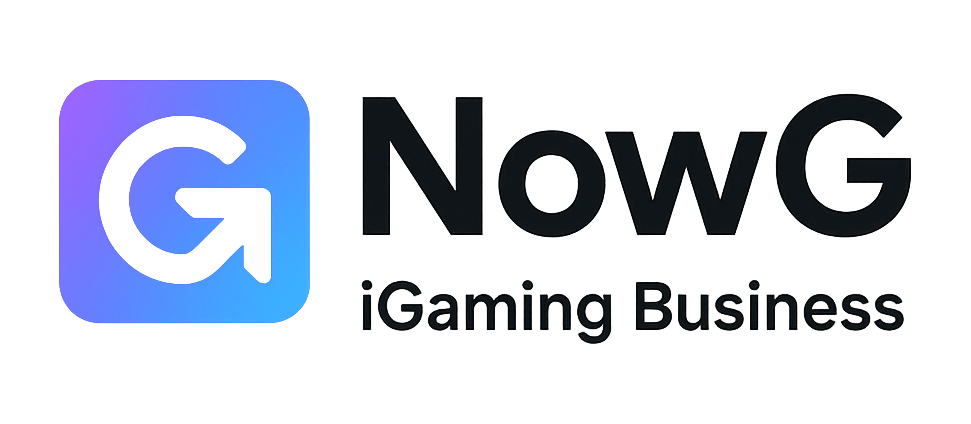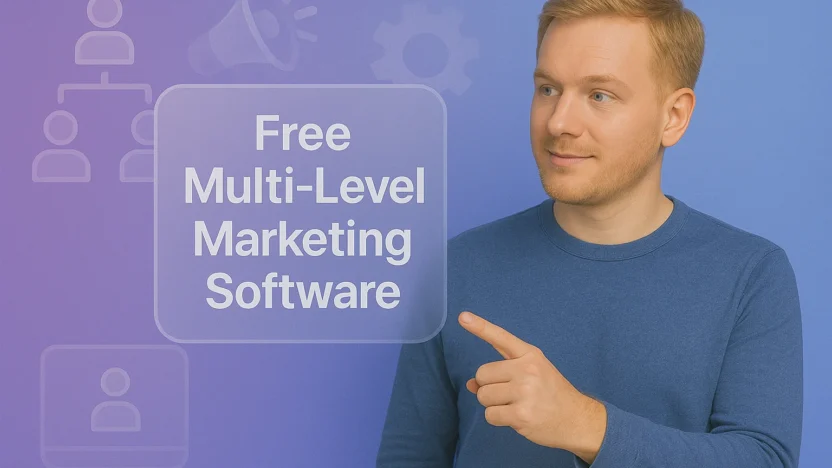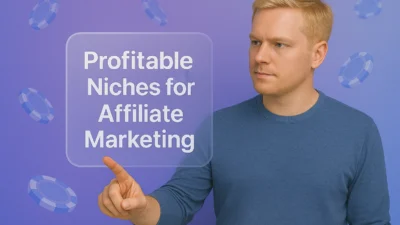Hunting for free MLM software in 2026 can feel like spelunking: some tunnels lead to “free trial” caverns, others end at “contact sales”. After advising a half-dozen MLM, referral, and hybrid network projects since 2018—and wrecking one internal pilot by underestimating the “free” stack—I’ve learned which options are genuinely usable at $0, which are freemium with hard ceilings, and when a paid platform is the saner path.
💡 Read this first: “Free” usually means one of three things: 1. open-source you host and maintain; 2. a free forever SaaS tier with limits (users, transactions, features); or 3. a “free demo/trial.” Below, I only include options you can realistically run without paying a license (though you may pay for hosting or payment gateways).
10 Free & Freemium MLM Options (2026)
| Software | Type | Best For | Core Strength | Main Watch-outs |
|---|---|---|---|---|
| eLitius (Subrion CMS) | Open-source (self-host) | Developers, budgets <$1k/mo | Customizable plans, no license fee | DIY security, PCI, updates |
| ARM Member MLM (WordPress) | Freemium WP plugin | Creators, infoproducts | Fast start on WooCommerce | Complex comp plans need paid add-ons |
| WP MLM (WordPress) | Freemium WP plugin | Simple binary/unilevel | Low lift for WP sites | Code quality varies by fork; vet carefully |
| Cloud MLM “Community” | Freemium (hosted/self) | Early pilots, 50–200 users | Onboarding wizard, basic e-wallet | Caps on users/transactions |
| Infinite MLM “Starter” | Freemium (hosted/self) | Global payout testing | Templates for binary/matrix | Scaling to audit-ready needs paid |
| Laravel MLM Starter | Open-source boilerplate | Engineering teams | Modern stack, extendable | You must build KYC, audits, UI |
| Node MLM Boilerplate | Open-source boilerplate | JS shops, microservices | API-first, fast iteration | No “product”—just a starter |
| OpenCart MLM Extension | Freemium module | Merchants on OpenCart | Works inside your store | Limited plans; code quality varies |
| Odoo MLM (Community add-ons) | Open-source ERP + apps | Ops-heavy SMBs | Inventory, finance & MLM logic | Config heavy; needs Odoo expertise |
| No-Code Stack (Airtable + Make + Stripe) | DIY template | Idea-stage validation | Launch in a weekend | Not audit-grade; fragile at scale |
What Counts as “Good Enough” in Free MLM?
- Comp plan logic: unilevel, binary, matrix, breakaway; rank rules; caps; carryover.
- Commissions engine: period closes; retro adjustments; clawbacks; audit trail.
- Wallets & payouts: balance ledger, fees, tax forms, export to mass pay.
- Product catalog: SKUs, PV/BV, autoship, coupons.
- Compliance: KYC/AML hooks, returns workflow, terms governance.
- Scale/Security: basic rate limiting, role permissions, backups.
⚠️ Hard truth: Multi-currency, tax withholding, and audit-ready reporting rarely exist in free tools. If you plan to pay thousands of reps across geos, budget for a paid platform or serious engineering.
Deep Reviews of the 10 Options
1. eLitius (Subrion CMS) — Open-Source Classic
What it is: An open-source MLM package built atop Subrion CMS (PHP/MySQL). You self-host, modify templates (Smarty), and wire your own payments/KYC.
Upsides: No license fee; code you can read; flexible comp logic for basic unilevel/binary flows; quick MVP path if you’re PHP-comfortable.
Downsides: You own security (patches, WAF, backups), ledger integrity, VAT/tax logic, and performance tuning. Modern UX will require work, as will SSO and API integrations.
My take: I’ve deployed eLitius twice for pilot networks (<300 users). It’s perfectly fine for a contained beta with Stripe + manual payouts. When we crossed 1k distributors, audit needs and returns handling pushed us to a paid stack.
2. ARM Member MLM (WordPress) — Freemium Plugin
What it is: A WordPress membership/MLM plugin that piggybacks on WooCommerce. Free core usually includes basic genealogy, referrals, and simple bonuses; advanced plans (e.g., binary cap rules, rank ladders) live behind add-ons.
Upsides: WordPress familiarity; one-click install; fast to a live checkout; great for creators/influencers selling info-products, with “refer a friend” trees that look like MLM.
Downsides: True MLM math (carryovers, compression, multiple wallets) strains WP plugins. Add-ons pile up costs; maintenance and QA get painful with many extensions.
My take: I love it for proof-of-concepts and micro-networks (<200 reps). The moment Finance asks for period close reports that reconcile to the penny—start planning your exit to a dedicated platform.
3. WP MLM (WordPress) — Lightweight Starts
What it is: A family of free/low-cost WordPress plugins marketed as MLM. Most support simple binary/unilevel and referral links, with genealogy pages and basic e-wallets.
Upsides: Minimal lift for teams already on WP; community themes and builders get you branded fast; decent for “single product + referral tree” motions.
Downsides: Quality varies widely across forks. Always request a code sample, test commission edge cases (returns, PV/BV changes, cap overflow), and confirm the plugin’s update cadence.
My take: We used a WP MLM plug-in to validate pricing tiers and onboarding language with 50 early sellers. It saved us weeks. We never intended to run payroll on it—and you shouldn’t either.
4. Cloud MLM “Community” — Freemium Hosted
What it is: A SaaS MLM product that sometimes offers a community or starter tier: limited users, one comp plan, basic reports. Paid tiers unlock audit features, multi-currency, and advanced rules.
Upsides: Easiest onboarding of the bunch; no servers; friendly dashboards; reasonable export options; often includes a basic e-wallet with payout exports.
Downsides: Hard ceilings (users, invoices) force an upgrade at the worst possible time—when growth hits. Read the cap tables and migration terms up front.
My take: This is a great “training wheels” setup. I’ve had a team run 6 months on a community tier, then negotiate a lift to mid-tier once revenue justified the move. Just model TCO early (license + payment fees + ops).
5. Infinite MLM “Starter” — Freemium & Templates
What it is: Another common freemium entrant offering a starter package to design binary/matrix plans and test payouts, often with a guided wizard and seed data.
Upsides: Faster than rolling your own; templates for popular plans; can simulate period closes; fair sandbox to teach your finance lead how MLM behaves.
Downsides: Starter plans tend to exclude returns workflows, multi-wallet accounting, and deep tax logic. Expect to upgrade for production.
My take: Excellent “calculator” in the early stage. We used it to A/B the comp plan before we ever recruited a seller. Once real orders hit, we moved.
6. Laravel MLM Starter — Open-Source Boilerplate
What it is: A variety of community boilerplates on Laravel (PHP) offering user auth, genealogy scaffolds, and example commission jobs.
Upsides: Modern framework, testability, clean APIs, and developer velocity. You can architect a real system: services, queues, and hardened ledgers.
Downsides: Everything beyond the skeleton is on you: KYC, fraud rules, returns handling, and a pleasant back office. Time is your currency.
My take: My favorite for in-house teams who want control. We built a commission microservice that withstood audits—but it took two sprints to get the ledger right and another two to nail adjustment flows.
7. Node MLM Boilerplate — Open-Source, API-First
What it is: A lightweight Node/TypeScript starter with genealogy & payout stubs; designed for microservices and event-driven systems.
Upsides: Great for JS shops; easy to integrate with Stripe, message queues, and an SPA back office; scalable architecture from day one.
Downsides: It’s a starter, not a product. If you don’t have an engineer who’s shipped payments before, you’ll burn cycles.
My take: We used a Node starter to bolt MLM logic onto an existing DTC app. Worked well—until we needed iron-clad period close reporting. We invested in a double-entry ledger and never looked back.
8. OpenCart MLM Extension — Store-First Approach
What it is: A free/low-cost module that adds referral trees and simple commission rules inside OpenCart.
Upsides: If your entire business is in OpenCart, you keep it in one place—catalog, orders, commissions; less context switching.
Downsides: Limited comp plan sophistication; code quality differs by vendor; updates can lag behind OpenCart core releases.
My take: A tidy way to test “MLM-ish” incentives for a merchant audience without re-platforming. Not for enterprise MLMs.
9. Odoo MLM (Community Add-ons) — ERP & MLM
What it is: Odoo (open-source ERP) plus community modules that implement downlines, PV/BV accounting, and simple commission rules.
Upsides: Inventory, invoicing, accounting, CRM—and MLM logic—in one stack. Powerful for ops-heavy SMBs who already love Odoo.
Downsides: Configuration-heavy; partner support varies by module; you need an Odoo expert to keep it healthy and compliant.
My take: We paired Odoo with a paid MLM engine via API at scale. If I had to stay free, I’d keep Odoo for ops and push commissions to a dedicated service to avoid ERP custom-code sprawl.
10. No-Code Stack (Airtable + Make + Stripe) — Weekend MVP
What it is: A DIY approach: store genealogy & orders in Airtable, calculate commissions with Make/Zapier, and pay via Stripe/PayPal exports.
Upsides: Fastest path to test an idea, messaging, and comp psychology with 20–50 sellers. Zero engineers required.
Downsides: Fragile, not audit-ready, no concurrency control. The second refunds or chargebacks enter, you need human oversight.
My take: We used this to validate whether a “starter kit + rank bonus” resonated. In 30 days, we had signal. Then we retired it—gracefully—before it broke.
Free vs Paid — My Personal Scorecard
| Scenario | Free/Freemium Choice | When I Switch to Paid |
|---|---|---|
| Idea validation (<100 sellers) | WordPress plugin or no-code stack | When refunds/returns appear or chargebacks rise |
| Pilot (<500 sellers, 1–2 geos) | Freemium hosted (Cloud MLM/Infinite) | When Finance asks for audit trails and tax withholding |
| Scale (>1k sellers, multi-currency) | Open-source & engineers (Laravel/Node) | As soon as legal/compliance demands SLA & certifications |
| Enterprise (>5k sellers, global payouts) | Not recommended | Immediately—paid platform with KYC/AML, SOC2, payout rails |
🧾 Budget reality: Free software saves license fees but shifts cost to people, process, and risk. If you don’t have a developer/analyst and a finance owner, free will get expensive fast.
Critical Capabilities Checklist
(Use Before You Commit)
- Comp plan coverage: Does it support your exact rank rules, caps, compression, and carryover?
- Reconciliation: Can you reproduce a distributor’s payout from raw order lines every time?
- Returns/chargebacks: How do adjustments cascade across the tree? Are negative balances handled?
- Wallet & taxes: Is there withholding logic by country/state and export for W-8/W-9 equivalents?
- Audit & logs: Are changes (rank edits, manual adjustments) logged with who/when/why?
- Backups & RTO: For self-hosted, what’s your restore-time objective?
- Fraud controls: Velocity checks, duplicate identities, staging payouts (net-15/30) to avoid gaming.
Implementation Playbook – Free Stack
- Write the comp plan as code: Translate ranks, PV/BV, and caps into explicit formulas with examples.
- Choose the base: WordPress plugin (fastest), freemium SaaS (safest), or OSS starter (most control).
- Start with one plan & one geo: Resist the urge to add matrix + binary + breakaway at once.
- Close weekly, reconcile monthly: Weekly closes find data errors; monthly closes pay.
- Pilot with insiders: 20–50 sellers who accept hiccups; give them white-glove support.
- Instrument everything: Keep raw order → payout lineage; you’ll thank yourself during disputes.
- Have an exit plan: Define how you’ll migrate data when you outgrow “free.”
Pros & Cons of Free MLM Software in 2026
Pros
- 🚀 Fast to pilot & validate comp psychology
- 💸 No license fee (but hosting/ops still exist)
- 🧩 Flexible if open-source (you own the code)
- 🧪 Great sandboxes for Finance/Ops to learn MLM mechanics
Cons
- 🛡️ Security & compliance risk (KYC/AML, tax)
- 🧮 Fragile reconciliation & audit trails
- 🌍 Global payouts & multi-currency rarely “free”
- 👷 Requires in-house technical & finance ownership
When to Stop Being Heroic and Go Paid?
- You can’t reproduce payouts for three consecutive periods without manual work.
- Refunds cause chaos (negative balances everywhere, angry tickets).
- Legal says “SOC 2/GDPR/KYC” and your current stack says “maybe later.”
- Finance begs for accrual reports you can’t generate.
- Open support tickets spike and your small team is underwater.
✅ Rule of thumb: The moment your people cost to keep “free” alive exceeds a paid platform’s annual license, switch. Your reps—and your sanity—are worth it.
Final Verdict
Free MLM software has a job: prove the idea, teach your team, and get you a few hundred happy sellers without blowing the budget. For that, WordPress plugins, freemium hosted tiers, and open-source starters are fantastic. But free isn’t “cheap” forever. As you hit multi-geo payouts, tax complexity, and audit demands, a paid platform—or a well-funded in-house build—becomes the rational move.
Use the list above to pick your on-ramp, keep your comp plan “as code,” and design a graceful exit to paid long before you need it. That’s how you scale without burning out your ops team or breaking trust with your field.
FAQ
Is there any truly unlimited free MLM software?
“Unlimited” at $0 is unrealistic. Open-source is license-free but not cost-free (hosting, security, dev time). Freemium SaaS tiers cap users, transactions, or features. Plan for an eventual upgrade or invest in engineering.
Can I pay global distributors with free tools?
You can export payout files to PayPal/Stripe/Wise from free stacks, but proper withholding, tax forms, and KYC generally require paid services or custom development. Don’t wing compliance.
What’s the safest free path for a non-technical founder?
A freemium hosted product (e.g., “community” tier) is safest: no servers to patch and basic guardrails. WordPress plugins are fine if you already run WP securely. Avoid self-hosting OSS without a developer.
How big can I scale on free before switching?
Most teams hit friction between 200–1,000 active sellers: returns, tax, multi-currency, and dispute resolution create ops overhead. If you can’t reconcile a close with zero manual edits, you’re past the free comfort zone.
What’s the #1 mistake with free MLM stacks?
Not writing the compensation plan as code (precise formulas & test cases). Ambiguity turns into disputes. Treat the comp plan like software and test it like software.




